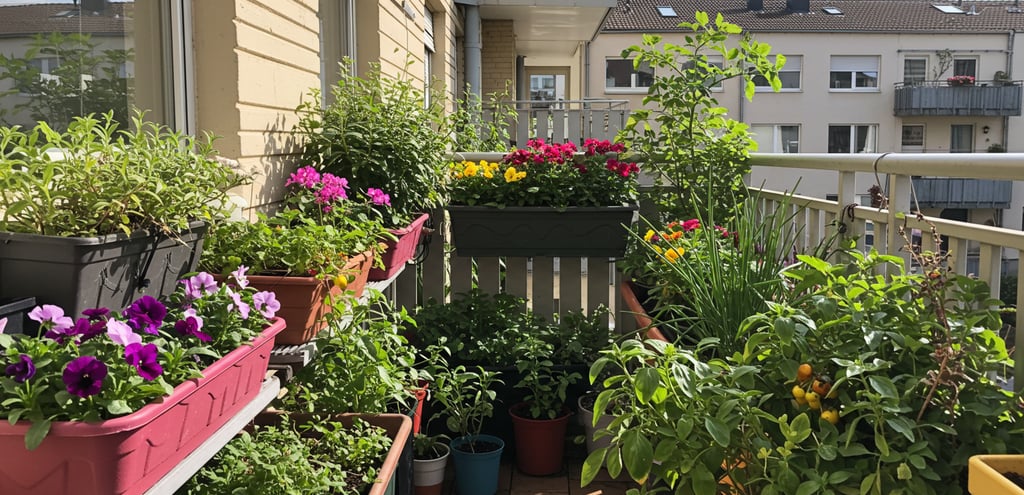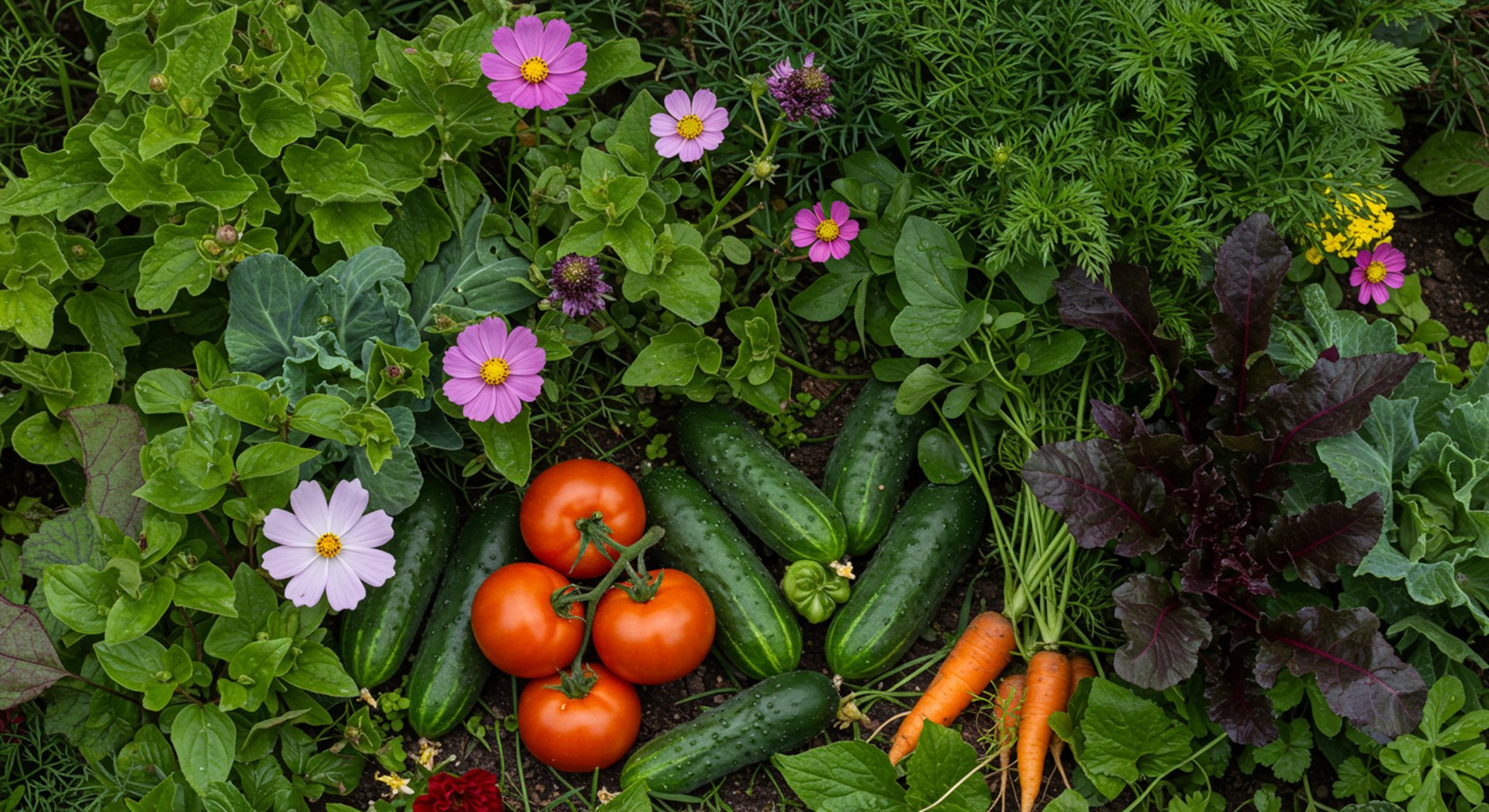Transform Your Balcony into a Thriving Garden Oasis: 10 Essential Tips
Discover how to turn even the smallest balcony into a lush, vibrant garden oasis. In this post, we share 10 practical and essential tips to help you maximize space, choose the right plants, and create a relaxing green escape right outside your door—perfect for beginners and city dwellers alike.
Balcony Botanist
8/3/20254 min read


Whether you're working with a narrow fire escape or a spacious terrace, balcony gardening opens up possibilities for fresh herbs, vibrant flowers, and even homegrown vegetables in the smallest urban spaces. After years of trial and error (and more than a few plant casualties), these ten strategies will help you maximize your outdoor space and create a garden that actually thrives.
1. Know Your Light Zones
Before buying a single plant, spend a week tracking sunlight patterns on your balcony. Most people guess wrong about their lighting conditions. Note which areas get morning versus afternoon sun, where shadows fall throughout the day, and how neighboring buildings affect light exposure.
Full sun plants need six-plus hours of direct sunlight, while shade varieties thrive with just two to four hours. Many herbs like basil and rosemary demand full sun, but leafy greens such as lettuce and spinach actually prefer some afternoon shade in hot climates.
2. Choose Containers That Actually Work
Skip the decorative pots without drainage holes—they're plant death traps. Instead, invest in containers that are wider than they are tall for better root development and stability in wind. Terra cotta breathes well but dries out quickly, while plastic retains moisture longer but can overheat roots in direct sun.
For vegetables, calculate container size by the mature plant: tomatoes need at least 20 gallons, while herbs do fine in 6-8 inch pots. Self-watering containers are worth the investment for anyone who travels frequently or tends to forget watering schedules.
3. Master the Weight Distribution Game
Balconies have weight limits, and soil gets heavy fast—especially when wet. Place your heaviest containers closest to the building where structural support is strongest. Use lightweight potting mix instead of garden soil, which can weigh three times more and doesn't drain well in containers anyway.
Consider vertical growing systems or hanging planters to maximize space without overloading your balcony. Wall-mounted herb gardens and tiered plant stands distribute weight better than clustering everything in one corner.
4. Build Your Microclimate
Balconies create unique growing conditions that differ from ground-level gardens. Wind can quickly dehydrate plants, while concrete and metal surfaces create heat islands that stress vegetation. Group plants together to create humidity pockets and use taller plants to shelter more delicate ones.
In windy locations, choose sturdy plants like sedums, ornamental grasses, or vegetables with strong stems. Windscreens made from bamboo fencing or lattice can protect without blocking all airflow.
5. Water Smart, Not Hard
Container plants dry out faster than ground gardens, but overwatering kills more balcony plants than drought. Stick your finger two inches into the soil—if it's dry, water deeply until it runs out the drainage holes. Surface watering creates shallow root systems that can't handle heat stress.
Install a drip irrigation system or soaker hoses if you have multiple containers. For smaller setups, watering globes or self-watering spikes can bridge the gap during weekend trips.
6. Feed Regularly with the Right Stuff
Container plants are completely dependent on you for nutrition since they can't send roots into surrounding soil. Use a balanced, slow-release fertilizer at planting, then supplement with liquid fertilizer every two weeks during growing season.
Vegetables and flowering plants are heavy feeders, while most herbs prefer lean soil—over-fertilizing herbs actually reduces their flavor intensity. Compost tea provides gentle, consistent nutrition without the risk of burning roots.
7. Think Vertical, Plant Compact
Maximize your growing space by going up instead of out. Trellises, plant towers, and hanging baskets multiply your planting area without expanding your footprint. Train vining crops like cucumbers and peas up supports rather than letting them sprawl.
Choose compact or dwarf varieties specifically bred for container growing. 'Patio' tomatoes, 'Pixie' cabbage, and 'Paris Market' carrots produce full-sized harvests in small spaces. Many seed companies now offer entire container garden collections.
8. Plan for Seasonal Changes
Balcony conditions shift dramatically with the seasons. Summer heat can be brutal for plants against south-facing walls, while winter winds can freeze roots in exposed containers. Move portable plants to protected areas during extreme weather, or invest in plant covers and insulation wraps.
Plan succession plantings for continuous harvests—sow lettuce seeds every two weeks, or replace spent summer annuals with fall-blooming varieties. This keeps your balcony productive and attractive year-round.
9. Choose Plants That Serve Multiple Purposes
Space is premium on balconies, so select plants that work overtime. Herbs provide fresh cooking ingredients while offering fragrance and flowers. Edible flowers like nasturtiums and calendulas add color while doubling as salad garnishes.
Consider plants that provide privacy screening along with beauty or food. Bamboo creates instant privacy, while espalier fruit trees can block unsightly views while producing fresh fruit.
10. Start Small and Build Success
The biggest mistake new balcony gardeners make is trying to do everything at once. Start with five or six easy-to-grow plants, learn their needs, and expand gradually. Herbs like basil, mint, and parsley are nearly foolproof, while cherry tomatoes and lettuce provide quick satisfaction.
Keep a simple garden journal noting what works and what doesn't in your specific conditions. Every balcony is different, and what thrives for your neighbor might struggle in your space due to subtle differences in light, wind, or exposure.
The Reality of Balcony Gardening
Balcony gardening isn't just container farming—it's creating a living ecosystem in a challenging environment. Plants will die, experiments will fail, and you'll occasionally kill something that should have been easy to grow. That's part of the learning process.
The reward comes in that first handful of cherry tomatoes still warm from the sun, or the fresh basil that transforms a simple pasta dinner. With patience and attention to your balcony's unique conditions, you can create a productive garden that proves great things really do come in small packages.

Join Our Growing Urban Plant Community
🌿 Grow Your Green Space—One Tip at a Time
Subscribe to the Balcony Bloomers newsletter and get:
🌱 Weekly balcony gardening tips for small spaces 🪴 Exclusive guides to growing herbs, veggies & flowers 🧪 Product reviews on planters, tools & eco-friendly gear 🎁 Free downloads, seasonal planting checklists & more
👉 Join 5,000+ city gardeners transforming their balconies into lush retreats. It’s FREE—and your plants will thank you.
Never Miss a Growing Tip
Join 5,000+ urban gardeners getting weekly insights on maximizing small spaces. Get the latest balcony garden ideas, tool recommendations that actually work, and seasonal growing tips delivered to your inbox every Tuesday.
BalconyBotanists@protonmail.com
(248) 716-3370
© 2025. All rights reserved.


